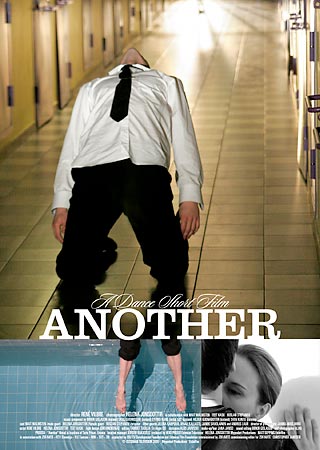 |
AnotherDance short-film, 25 min, 2005 Another trailer (5.8 MB) The film is shot on location in the well known Tartu Prison. Partly inspired by the fact that since its opening in November 2001 at least four intimate relationships have developed between guards and prisoners. Despite the external framework of prison cells and concrete walls the story revolves around relationships, genuine feelings and the question of taking responsibility for your own freedom. WHO IS THE REAL PRISONER HERE? The one who is locked in his cell or the guard who, despite all his possibilities to shape his own destiny, constantly hesitates to make a necessary decision? directed by choreography by music by produced by production companies Tartu PrisonFactsTartu prison opened its doors on 15th November 2002 as the first post-Soviet prison. The surroundings are approximately 9,5 hectares. The cost were 25 million Euros. The prison is the second most expensive building in Estonia. An integrated x-ray, security system that must reduce escapes down to zero. 200 Dvd recorded security cameras. 800 prisoners total. The jail is divided in three parts, where different prisoners are. Category 1: hostile, aggressive, psychopathic. Category 2: Normal prisoners. Category 3: neurotic, victim, dependant, anxious. 300 pre-detention prisoners and 200 convicted prisoners have bigger cells and more privileges than the pretrialers. Four psychiatrists, seven social workers and four chaplains work in the prison. Staff are around 350 people, male and female. Location and visual execution
Tartu Prison (Estonia) is one of the newest and most modern institutions of its kind in Europe. The prison complex conforms to the standards of today’s architecture, the interior and exterior of the buildings sport vivid colours – yellow, lilac, blue. In visual terms, the prison looks fascinating and photogenic. But despite the shiny surface it is still a prison and, much to the chagrin of the inmates, a most rigorously guarded prison at that. Underneath its bright veneer, hostility and suppressed emotions lie in wait en masse. The visual language of the film aims at conveying the variety of all aforesaid elements. Thus, behind the oftentimes even flow of colourful images another camera-eye keeps close watch on the proceedings, restlessly biding its time. The nervousness captured by the handheld camera alternates with the sequences of stability and calm. Lighting and editing also adhere to the emotional eclecticism inherent in the plot. The film’s visuals proper are framed, both formally and thematically, by the static black-and-white portraits of the prison’s factual inmates – murderers, thieves and rapists, including those sentenced for life. These portraits add a different, much deeper dimension to the playfulness of the story. |
